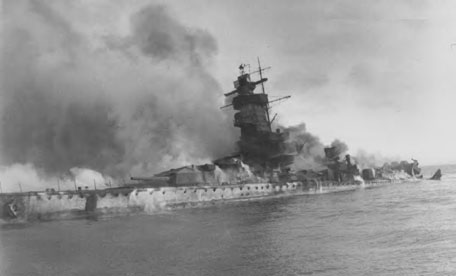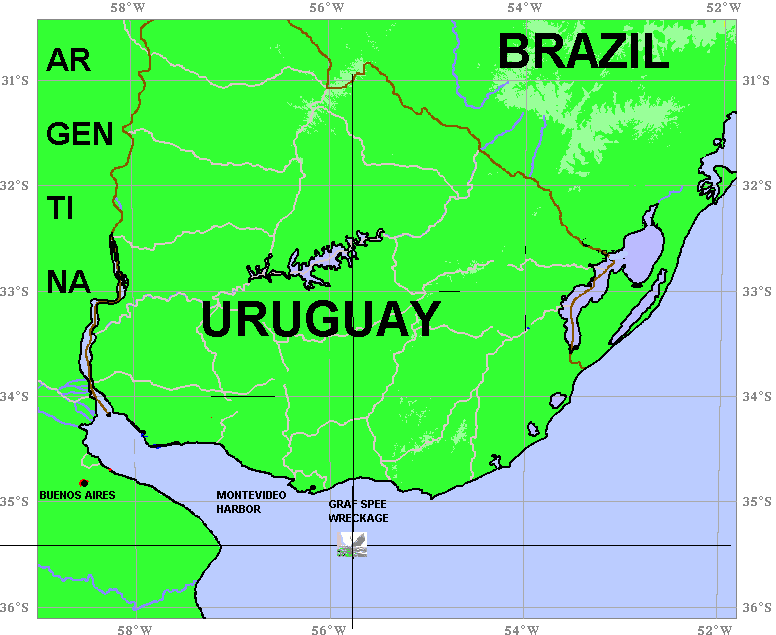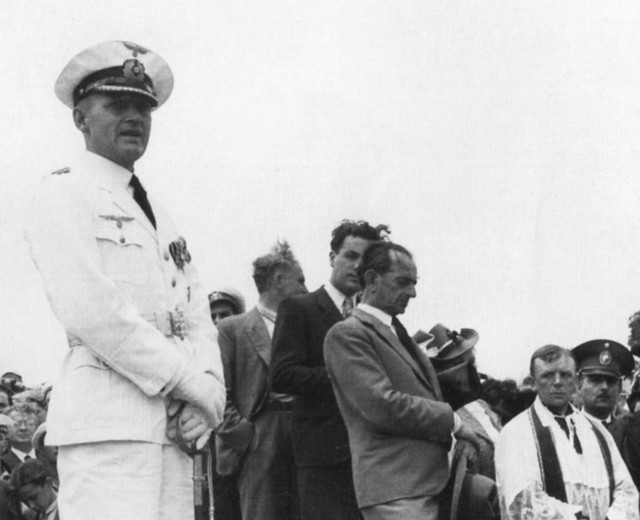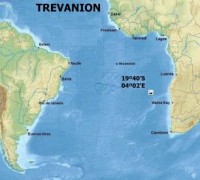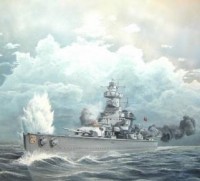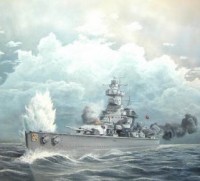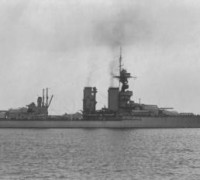RAIDER ADMIRAL GRAF SPEE * 8 SHIPS SUNK - BATTLE OF THE RIVER PLATE
15)BATTLE OF THE RIVER PLATE
NEW ZEALAND ELECTRONIC TEXT CENTRE
With the kind permission of Alison Stevenson from NZETC.
From the tactical point of view, one 8-inch and two 6-inch cruisers did not make an ideal force for dealing with a ship such as the Admiral Graf Spee, but the main principles of sea warfare hold good through all ages and the Royal Navy can find precedent or parallel for any situation that may arise.
It was Admiral Kempenfelt who wrote to Admiral Charles Middleton (afterwards Lord Barham), Comptroller of the Navy, in July 1779: The British cruisers were rapidly working up to full power and were steaming at more than 25 knots when the Exeter opened fire at 6.20 a.m., with her four forward guns, at 18,700 yards.
Her two after guns fired as soon as they would bear, about two and a half minutes. It appeared that the Admiral Graf Spee was heavily handled by the gunfire both of the First Division's concentration and that of the Exeter in the first phase, the culminating point perhaps being the firing of torpedoes by the latter ship.
The result of the action was completely satisfactory in the final outcome, but, as was stressed in an Admiralty survey, only a tactical blunder of the first magnitude by the enemy and the superiority of our personnel prevented the destruction of one of our ships and our being forced to abandon the action.’
The result of that tactical blunder was underlined in Commodore Harwood's dispatch. The most salient point of the enemy's tactics, he said, was that the Admiral Graf Spee closed on sighting the British ships and split her main armament, firing one turret at the First Division (Ajax and Achilles) and the other at the Exeter. This initial closing of the range had the effect of bringing all three ships into effective gun range at once and so avoided for them the most difficult problem of gaining range in the face of 11-inch gunfire.
At this point the German ship turned away under smoke and ‘from then onwards her commanding officer displayed little offensive spirit and did not take advantage of the opportunity that was always present either to close the First Division or the Exeter, the latter – and he must have known it – only having one turret in action.
Instead, the Graf Spee retired between the two and allowed herself to be fired at from both flanks. Only at one period, at 7.20 a.m., did she again concentrate on the First Division and she immediately abandoned this when the Ajax fired torpedoes.’ The Admiral Graf Spee’s frequent alterations of course were, from an avoiding point of view, well carried out and undoubtedly threw out much of the gunfire of the British cruisers.
She had an exceptionally high degree of maneuverability and apparently used full helm for her turns. On many occasions this gave her an apparent list ‘which raised our hopes’, but she always came upright again on steadying.
At no time did she ‘steam’ at a higher speed than 24 knots, and generally her speed was between 19 and 22 knots.
"Much, I may say almost all, depends upon this fleet; ‘this is an inferior against a superior fleet; therefore the greatest skill and address is requisite to counter the designs of the enemy, to watch and seize the favorable opportunity for action…, to hover near the enemy, keep him at bay, and prevent his attempting to execute anything but at risk and hazard, to command his attention and oblige him to think of nothing but being on his guard against your attack….’ Such was the manner in which the British cruisers fought the Battle of the River Plate.
Graf Spee billowed in flames off Montevideo harbor. Scuttling charges set to detonate in the torpedo room converted the mighty ship into a smoldering retorted metal under the eyes of the Uruguayans and her crew.
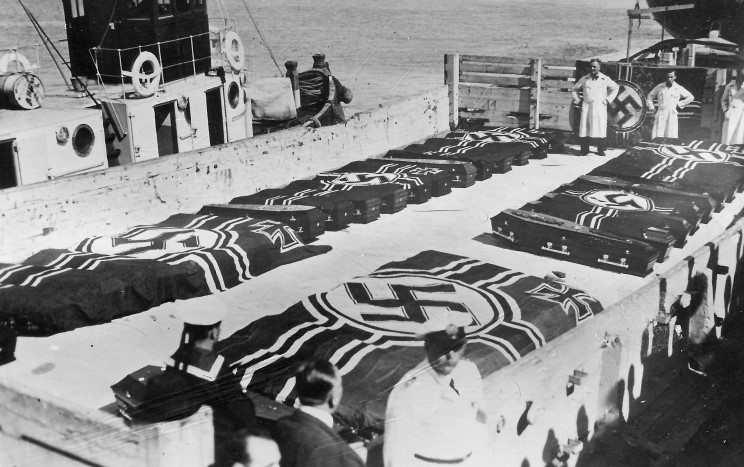
Caskets containing the remains of the 36 dead of Graf Spee are prepared for unloading at the Montevideo Harbor. The British losses totaled 72. Photo. www.maritimequest.com
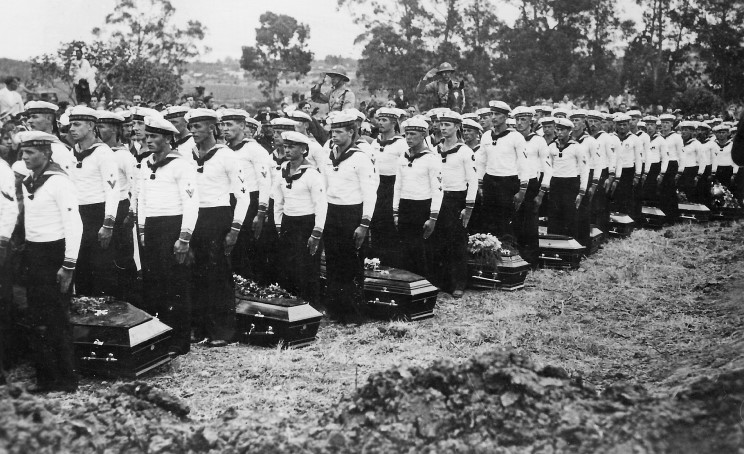
Above the funeral of the 36 crewmembers of the Admiral Graf Spee conducted at Montevideo. Photo. www.maritimequest.com
Map depicts Uruguay and Montevideo harbor with Graf Spee position.
Admiral Harwood. The man who inflicted the first great loss to the Kriegsmarine.
Kapitän zur See Hans Langsdorf. In the face of shame, humiliation and defeat, the death was his extreme choice.
